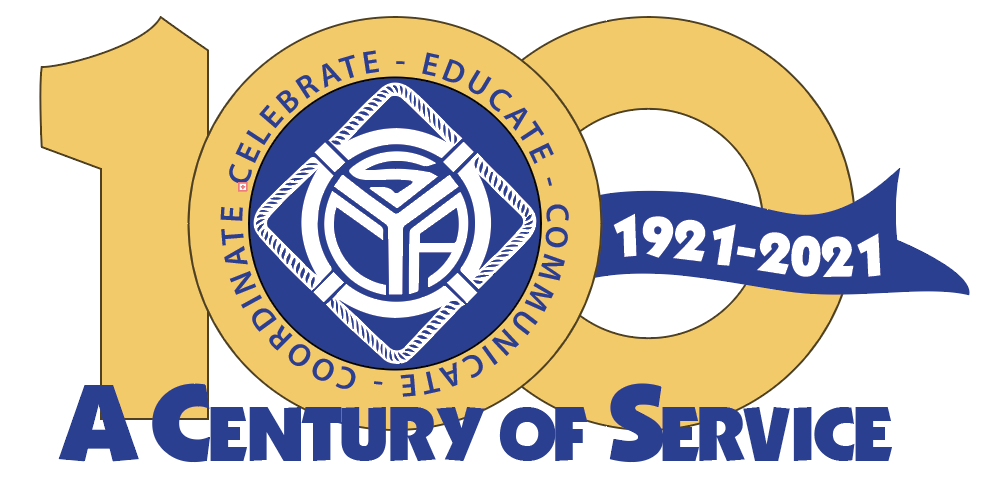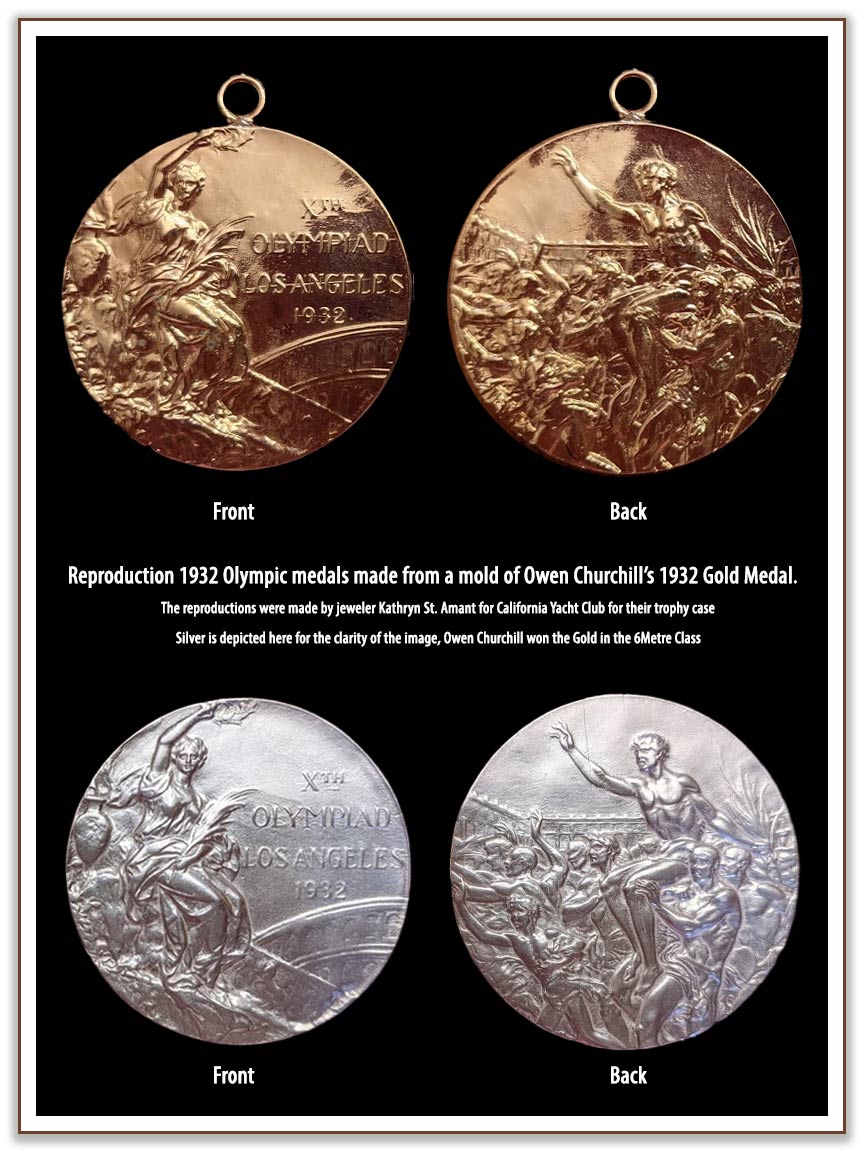
THE 1932 & 1984 OLYMPIC MEDALS
ABOUT THE REPRODUCTIONS
By Kathryn St. Amant, SCYA Historical Archive Team, & the Jeweler
Why is there so much more definition and texture in the silver medals? This was true even for the original medals. The “gold” medals were gilded silver. In other words; gold plated. Gold won’t stick to silver, and nickel won’t either. Copper sticks to silver – nickel sticks to copper – gold sticks to nickel. Before the gold can be electroplated on to silver, the item must be 100% clean of all grease and dirt, then a layer of copper is applied, then nickel, then the gold is electroplated. Therefore, the gold medals have three coatings of metal over the original textured silver, while the silver medals are the true metal with the depth of detail.
The medal reproduction story began at a Long Beach Boat Show. Kathryn met an Olympian who had a 1984 Los Angeles Olympic Medal. The Olympian pulled a medal out of their pocket to show Ms. St. Amant and she was asked about a reproduction medal that could be carried in a pocket or purse so the original could be kept in a safe. “People want to hold it” she was told, “and the gold is wearing off”. Kathryn made the medal and a few for other Olympians who won medals in the ’84 games. The mold was destroyed. No other medals exist from this mold.
A tie-tac was also created, 3/4″ tall, of the medal. This was made only for the same Olympian medal winners, made in the appropriate metal, the gold were made of 14K, silver and bronze were exactly that.
When a friend of Ms. St. Amant’s at California Yacht Club heard about the Olympic medal reproduction, that is when the idea of an Owen Churchill reproduction gold medal came about. Owen belonged to various yacht clubs, and raced under their burgees. The clubs wanted their time with the medal in their trophy cases. So, now they can do just that.
Owen Churchill’s medal was used for the reproduction you see here. It was made around 1985. A silicon mold was created so that the original medal would not be harmed. The medal showed wear at the time, so some detail was already missing. The mold was destroyed after the work was done, one reproduction medal made through the lost wax process for the yacht clubs. The jeweler, Kathryn St. Amant, has one set made from that mold, one of silver and one “gold” in her safe today for safety. The only time it has been taken out and shared is right now in this image.
LOS ANGELES 1932 MEDALS*
On the obverse, the traditional goddess of victory, holding a palm in her left hand and a winner’s crown in her right. A design used since the 1928 Games in Amsterdam , created by Florentine artist Giuseppe Cassioli (ITA – 1865-1942) and chosen after a competition organised by the International Olympic Committee in 1921. For these Games, the figure of victory is accompanied by the specific inscription: ” Xth OLYMPIAD LOS ANGELES 1932 “.
On the reverse, an Olympic champion carried in triumph by the crowd, with the Olympic stadium in the background.
Designer: Giuseppe CASSIOLI
Composition: 1st Place (Gilt silver), 2nd Place (Silver), 3rd Place (Bronze)
Diameter: 55 mm
Mint: The Whitehead & Hoag Co.
LOS ANGELES 1984 MEDALS*
On the obverse, the traditional goddess of victory, holding a palm in her left hand and a winner’s crown in her right.
A design used since the 1928 Games in Amsterdam, created by Florentine artist Giuseppe Cassioli (ITA – 1865-1942) and chosen after a competition organised by the International Olympic Committee in 1921. For these Games, the figure of victory is accompanied by the specific inscription: “XXIII OLYMPIAD LOS ANGELES 1984”.
On the reverse, an Olympic champion carried in triumph by the crowd, with the Olympic stadium in the background.
Designer: Giuseppe CASSIOLI; Dugald STERMER
Composition: 1st Place (Gilt silver), 2nd Place (Silver), 3rd Place (Bronze)
Diameter: 60 mm
*Information retrieved from:
https://www.olympic.org/los-angeles-1932-medals
https://www.olympic.org/los-angeles-1984-medals
Accessed on February 1, 2021

